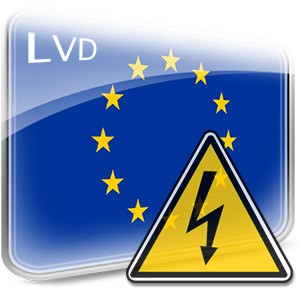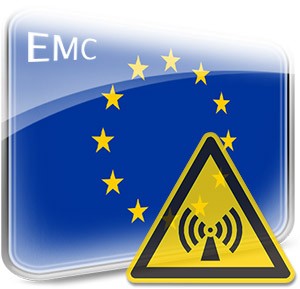
CE Marking of Electrical Equipment
Just about every piece of machinery involves at least some electrical components – and many products that may be offered for retail do so too. That means they have to comply with two European Directives – the Low Voltage Directive (LVD) 2014/35/EU, and the Electromagnetic Compatibility (EMC) Directive 2014/30/EU.
As with all Directives, it can be a technical and confusing process – but we are here to help you through it. Let’s take them one at a time:
Low Voltage Directive (LVD)
-
1Determine whether the LVD applies to your product
All electrical equipment designed for use with a voltage rating between 50 and 1,000 volts (AC) or between 75 and 1,500 volts (DC) is covered by the Directive.
 It is important to note that these ratings apply to input or output voltages, not the voltages within the equipment.
It is important to note that these ratings apply to input or output voltages, not the voltages within the equipment.Battery-operated equipment outside of these ratings are outside the scope of this Directive, except for chargers.
The essential purpose of the Low Voltage Directive is to protect people, animals and property from hazards caused by electrical equipment.
Manufacturers must design equipment that takes account of factors such as high temperatures, arcs, and radiation.
The environment where electrical equipment is intended to be operated must be suitable for such conditions.
-
2Determine CE Marking requirements for LVD
A manufacturer must have test results in order to prove product conformance. Harmonized European Low Voltage Standards are general proof of compliance with the Directive.
Although a manufacturer is not required to use European Standards to comply with the Directive, he will have to show evidence in the Technical File of how compliance was achieved.
-
3Identify European Standards that apply to your product
We will identify which European Standards apply to your specific product. Application of these standards will give the presumption of conformity for CE Marking to the Directive.
-
4Apply these European Standards to your product
We will work with your engineers on the application of these standards to your product. All the necessary information is contained in the standards and sets out the technical requirements to meet the scope of the Directive.
-
5Conduct tests to prove conformance to the Low Voltage Directive
Using EN 60204, it is possible to structure tests to comply with the Directive. We will assist you in this process, and apply a risk assessment to assure compliance.
-
6Establish a system to show compliance in production of the product
The manufacturer is obliged to set up a quality control system to ensure that the products to be produced in the future comply with CE Marking for the Low Voltage Directive. Production units are generally subjected to specific tests. Results of these tests are logged against each unit of production with a unique serial number and retained for traceability.
-
7Assemble a Technical File
We will compile a Technical File that will contain all the relevant documentation such as drawings, test results, design calculations, parts lists and a general description of the equipment.
-
8Issue the Declaration of Conformity
This shows that you have met all the requirements of the Low Voltage Directive. This document is generally given to the end user of your product. EU Agencies may require this document to allow free movement of your product within Europe. The manufacturer and his authorized European Representative must sign the Declaration of Conformity. You may now affix the CE Mark to your product.
Electromagnetic Compatibility Directive (EMC)
 In addition to the Low Voltage Directive, it is necessary to comply with the Electromagnetic Compatibility Directive (EMC) 2014/30/EU.
In addition to the Low Voltage Directive, it is necessary to comply with the Electromagnetic Compatibility Directive (EMC) 2014/30/EU.
This is primarily aimed at protection of the electromagnetic spectrum, rather than safety of equipment. It requires that equipment should not emit unwanted electromagnetic interference and should not be influenced itself by regular levels of interference.
CE Marking of equipment to the EMC Directive runs according to the following steps:
-
1Determine if the EMC Directive applies to your equipment
The Directive covers apparatus, components and sub-assemblies together with mobile installations. Requirements for EMC performance of electrical equipment within all the European community are therefore the same.
-
2Determine the CE Marking requirements
The Directive states that electrical equipment shall be designed and produced in a manner where electromagnetic disturbance does not affect the way in which other equipment is intended to operate.
It should have a degree of immunity to disturbance to the extent that its operation is not degraded while in operation.
Certain types of equipment are excluded from the EMC Directive. These include radio and telecommunications equipment, aeronautical products and certain radio equipment used by radio amateurs.
-
3Determine the European Standards that apply to your equipment
Although you are not required to use European Product Standards, compliance with the EMC Directive is very technical in nature and requires very specific equipment to measure radiated and immunity disturbances. We will work with you to undertake all the necessary tests in your location before your equipment is sent to Europe.
-
4Conform to these Standards and set up a Quality System
We will assist you to set up a production and quality management system. This quality system is to ensure that any product changes made do not happen before understanding their effect on CE Compliance.
-
5Conduct lab tests to confirm conformance with EMC Standards
We will work with your engineers and our chosen test house to ensure a smooth outcome to compliance to the EMC Directive.
-
6Compile a Technical File
A Technical File must be compiled and shows you have met all the requirements of the EMC Directive. We will work with the test lab and your own engineers to ensure the file contains all the necessary details.
-
7Issue the Declaration of Conformity
We will create a Declaration of Conformity for you to sign as manufacturer of this equipment. You are now able to place the CE Mark on your product which allows you to sell this equipment within the European Union.
